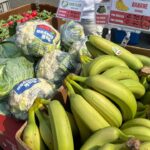In what health officials are calling a “significant public health incident,” a suspected E. coli outbreak has struck a prominent Saskatoon farm and food processing facility, leaving dozens ill and health authorities scrambling to contain the spread.
The outbreak, first detected late last week when multiple patients presented at local hospitals with severe gastrointestinal symptoms, has now been linked to a single agricultural operation on the outskirts of Saskatoon. Laboratory testing has preliminarily identified a virulent strain of E. coli bacteria, though officials are also investigating the presence of a parasitic co-infection that may be exacerbating symptoms.
“We’re dealing with a complex contamination scenario,” said Dr. Eleanor Matheson, Saskatchewan’s Deputy Chief Medical Officer. “Initial testing suggests we’re facing a particularly aggressive form of E. coli O157:H7, which can cause severe illness even at relatively low exposure levels.”
The facility, which supplies produce to numerous restaurants and grocery chains across Saskatchewan and neighboring provinces, has voluntarily ceased operations while a thorough investigation takes place. Sources within the Canadian Food Inspection Agency indicate that contaminated irrigation water may be the primary vector, potentially affected by recent heavy rainfall that caused flooding in several agricultural areas.
Most concerning to health officials is the unusual severity of symptoms reported. Beyond the typical bloody diarrhea and abdominal cramping associated with E. coli infection, several patients have developed hemolytic uremic syndrome (HUS), a potentially life-threatening complication that can cause kidney failure.
“What we’re seeing is consistent with a particularly virulent strain,” explained infectious disease specialist Dr. James Henderson from the University of Saskatchewan. “The combination of the specific E. coli variant and what appears to be a concurrent parasitic infection is creating a perfect storm of gastrointestinal distress in affected individuals.”
The farm’s distribution network spans much of western Canada, raising concerns about the potential scope of the outbreak. Health authorities in neighboring provinces have been alerted, with Alberta and Manitoba already reporting suspected related cases.
“We’re dealing with a rapidly evolving situation,” said Saskatchewan Health Minister Linda Weiss at a hastily arranged press conference. “Our immediate priority is identifying all potentially contaminated products and ensuring they’re removed from store shelves and restaurant kitchens.”
Local business analysts estimate the economic impact could be substantial, with the affected facility employing over 200 workers and contributing significantly to the regional agricultural economy. Industry representatives are already calling for enhanced water testing protocols and stricter enforcement of existing food safety regulations.
The timing is particularly problematic as the province’s agricultural sector was already facing challenges from abnormal weather patterns and rising production costs. This incident could further strain consumer confidence in locally sourced produce, according to agricultural economists monitoring the situation.
Health officials are advising anyone who has consumed products from the facility within the past week to monitor for symptoms including severe stomach cramps, diarrhea (often bloody), and vomiting. Those experiencing symptoms should seek medical attention immediately and mention potential E. coli exposure.
As the investigation continues, authorities face the critical question: was this outbreak an unfortunate confluence of environmental factors, or does it point to more systemic failures in our food safety protocols that could put countless more Canadians at risk in the future?























